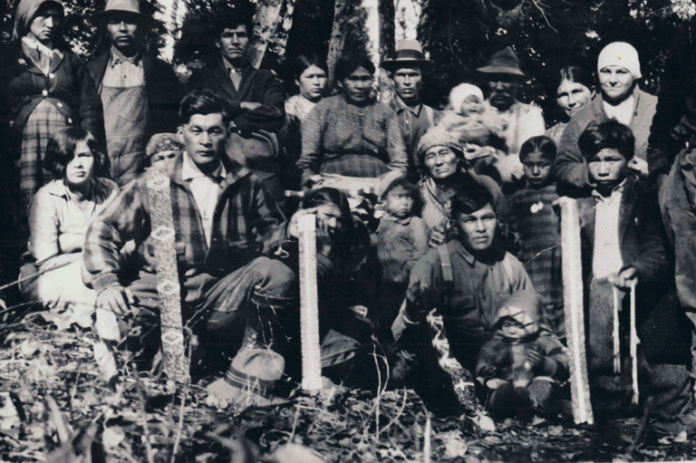

We are becoming used to hearing a Land Acknowledgment being said at the start of many official and unofficial meetings in North Grenville and surrounding lands in recent years. It confuses some to hear statements that the lands are the unceded territory of the Algonquin people, although other nations may also be mentioned in the statements, such as the Haudenosaunee, or Six Nations, and the Mississauga also.
This reflects the confusion that existed at the time the British assumed jurisdiction over the region after 1763, and the incompetent and incomplete attempts by British military officials to reach agreements with the Indigenous peoples of the area in order to allow settlement of around 3,000 refugees from the American War of Independence who needed somewhere to live. In 1784, the Crown made agreements to that end with the Mississauga and the Haudenosaunee, although much of the territory between the Ottawa and Saint Lawrence Rivers were, in fact, traditional Algonquin lands.
Before the arrival of Europeans, the Algonquin people were a major force in trade and commerce, with traditional lands stretching from the St. Maurice River in the east, to Lake Nipissing in the west. The Ottawa River valley was the heart of these lands, the main route through which nations traded. There was a major settlement on Morrison Island in the Ottawa River, and anyone passing along the river paid their toll of a part of whatever goods were being transported. The Algonquin acted as middlemen in the fur trade between the French and the Huron to the west, further emphasising their strategic importance.
Aside from Morrison Island, the main Algonquin settlements were along the tributaries of the Ottawa, particularly the South Nation and Gananoque, and they had a major settlement at Trois Riviere, at the mouth of the St. Maurice. These settlements were comprised of a number of families, living together in the summer months, then individual families went to their traditional hunting areas during the winter. They used longhouses throughout the year, and had close alliances with the Nipissing, Oddawa and Huron peoples.
Their very strength brought them into conflict with the Iroquois south of the Saint Lawrence, who were rivals, particularly in the fur trade with the Europeans. The Mohawk, better armed by their English partners, began a war with the Algonquin around 1570 which lasted, off and on, for decades. For many years, the Saint Lawrence River valley itself became a no-man’s land, too dangerous for either side to inhabit, as Mohawk raiding parties used the Rideau River system to move warriors against the Algonquin bands in the lower Ottawa River region. In 1645, the French entered into treaty with the Mohawk, betraying their Algonquin allies. The position of the Algonquin became so desperate that, between 1650 and 1675, they were forced to leave the Ontario side of the Ottawa River and move to settlements near Montreal. Only Morrison Island was strong enough to resist the Mohawk. Many Algonquin joined mission settlements, and a very large number died in epidemics, leaving the nation weakened and unable to regain their lost territory.
So it was that the land we now live on, which had been the homeland of the Algonquin for so long, became practically empty for long periods, the scene of skirmishes and ambushes, where permanent settlement became impossible for either warring groups. By the time of the Conquest, after 1760, the powerful Algonquin people had been pushed out of their traditional lands and the Mohawk and Mississauga had taken over along the shores of the Saint Lawrence and along the inland waterways. So it was, that when the British came to make treaties for this land, it was not from the Algonquin they received it. The lands of the Algonquin were sold by the Mohawk and Mississauga, and the remnants of the great Algonquin nation were left without recognition by the new colonial power of Britain.
It was not until the early nineteenth century that groups of Algonquin returned permanently to lands around Golden Lake and Maniwaki, and it was not until the 1870’s that those at Golden Lake were provided with reserve lands. The people who had held that huge territory from the St. Maurice River to Lake Nipissing, were granted just 1,560 acres at Golden Lake. It cost the Crown $156.
When Land Acknowledgements describe these lands as unceded, it means that the traditional inhabitants, the Algonquin, have never formally surrendered or ceded the territory to the Crown, and the Crown’s claim to these lands is based on a mistaken assumption that other Nations had a right to cede them instead. Today, the Crown Canada has recognised the error of the past, and negotiations between the Canadian Government and the Algonquin Nation continue in an attempt to rectify an historic grievance.





